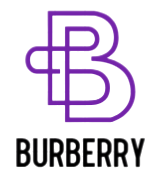Effective Restaurant Hygiene Solutions for a Cleaner Dining Experience
Maintaining high standards of hygiene in a restaurant is essential not only for ensuring customer satisfaction but also for upholding food safety and complying with health regulations. Effective restaurant hygiene solutions encompass a comprehensive approach that includes staff training, proper cleaning protocols, use of quality cleaning products, and the integration of modern technologies. Staff should be thoroughly trained on hygiene best practices, including frequent hand washing, wearing clean uniforms, and handling food with care to prevent cross-contamination. This training should be ongoing to keep up with evolving standards and reinforce the importance of cleanliness in every aspect of food preparation and service. A well-structured cleaning schedule is crucial for maintaining a consistently clean environment. This includes daily, weekly, and monthly tasks, such as sanitizing kitchen equipment, wiping down surfaces, cleaning restrooms, and deep-cleaning hard-to-reach areas. Using color-coded cleaning tools can help prevent cross-contamination between areas like the kitchen and restrooms.

Moreover, the selection of appropriate cleaning agents those that are food-safe, effective against bacteria, and environmentally friendly plays a critical role in achieving optimal hygiene standards. Ensuring that dishwashing machines are maintained regularly and used correctly also contributes to a cleaner dining experience. In addition to traditional cleaning practices, adopting technology-driven solutions can enhance hygiene efforts significantly. Touchless fixtures, such as sensor-activated faucets, soap dispensers, and hand dryers, help reduce the risk of germ transmission. Ultraviolet UV sanitizing devices and electrostatic sprayers can be used to disinfect large areas efficiently. Furthermore, digital checklists and hygiene monitoring systems help managers track cleaning tasks and ensure that protocols are being followed consistently. This use of technology supports accountability and transparency, key components in building trust with customers.Pest control is another critical aspect of restaurant hygiene. Regular inspections and preventative measures, such as sealing entry points, storing food properly, and disposing of waste promptly, can deter pests and maintain a sanitary environment.
Waste management itself must be handled with care; bins should be emptied frequently, kept clean, and positioned away from food preparation areas to avoid contamination. Equally important is the cleanliness of front-of-house areas, including dining tables, chairs, menus, and payment devices. These high-touch surfaces should be disinfected regularly, especially in the wake of heightened awareness of infectious diseases. Customers are more conscious than ever of the cleanliness of their dining surroundings, and visible efforts by staff to maintain hygiene can greatly influence their dining experience and perception of the restaurant. Ultimately, effective restaurant hygiene solutions require a combination of diligence, proper training, suitable equipment, and the integration of smart technologies. By creating a culture that prioritizes cleanliness, official site restaurants can ensure a safer environment for both staff and guests. A clean restaurant not only reduces the risk of foodborne illnesses and improves operational efficiency but also fosters customer loyalty and positive word-of-mouth.
